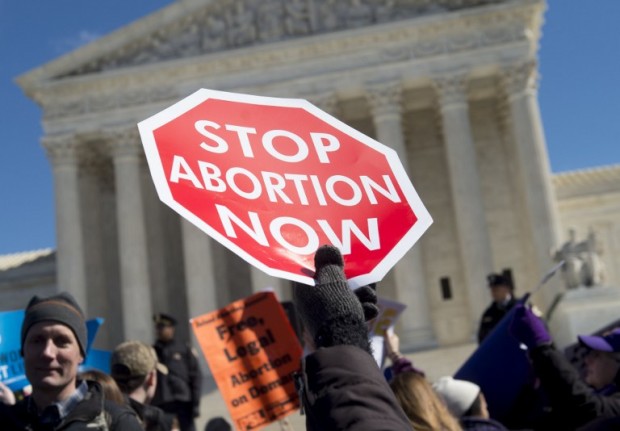
Anti-abortion activists rally outside of the Supreme Court in Washington, DC, March 2, 2016, following oral arguments in the case of Whole Woman’s Health v. Hellerstedt, which deals with access to abortion in Texas. AFP
MIAMI, United States — The abortion rate in the United States fell to its lowest point on record in 2014, and increasing restrictions on abortion access could be to blame, researchers said Tuesday.
The report led by the nonpartisan Guttmacher Institute was published in the journal Perspectives on Sexual and Reproductive Health.
“For the first time since 1975, the number of abortions in the United States dropped under one million (958,700 in 2013 and 926,200 in 2014),” said the report.
“The abortion rate also continued to decline, falling to 14.6 abortions per 1,000 women aged 15–44, the lowest rate ever recorded, and a 14 percent decline from 2011.”
The study itself did not delve into the reasons for the decline.
READ: Trump win resets culture war debate on abortion, LGBT rights
The US Supreme Court in 1973 ruled that the US Constitution protects a woman’s right to choose to have an abortion.
However, a series of restrictions enacted by individual states — including waiting periods and shorter limits — have made the procedure more difficult to access than ever before, said study lead author Rachel Jones.
“Abortion restrictions and clinic closures mean that patients may need to travel greater distances to access services,” she said, noting that 75 percent of women who seek abortion are poor or low-income, and nearly two thirds are already parents.
“It can be very difficult for them to arrange for time off from work, transportation and child care,” Jones said.
“While many find ways to access care despite these obstacles, some of the abortion rate decline is likely attributable to women who were prevented from accessing needed services.”
Ninety percent of all US counties had no clinic that provided abortions in 2014, said the report.
Although abortions declined an all but a handful of states, researchers “did not find a clear and consistent relationship between state restrictions and changes in state abortion rates,” it said.
Another possibility is that contraception is easier to access than before, including long-acting methods that do not require daily pill use.
Recent studies have shown that the unintended pregnancy rate in the United States has also been dropping, suggesting a lesser need for abortion. CBB